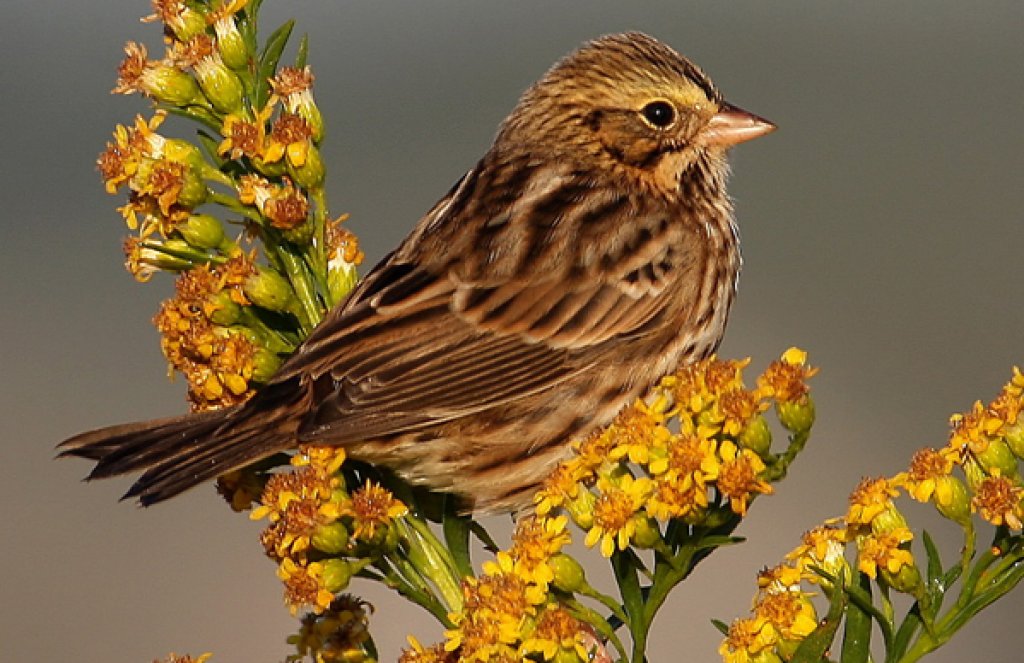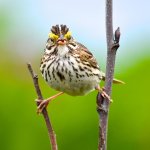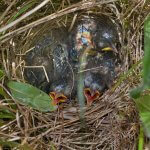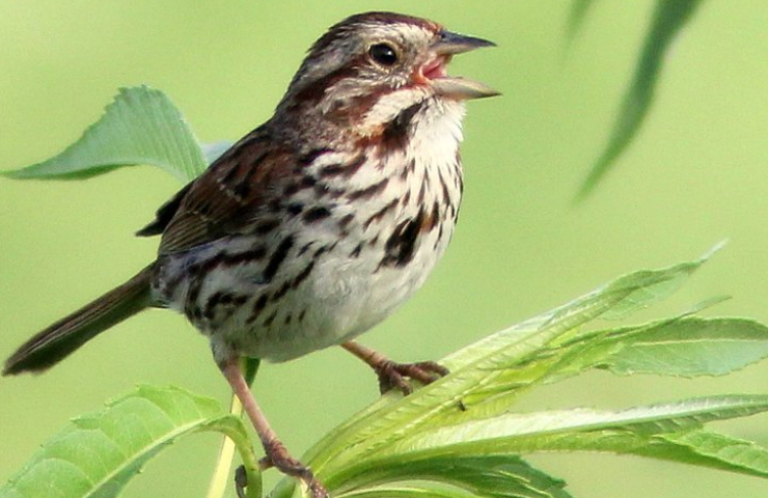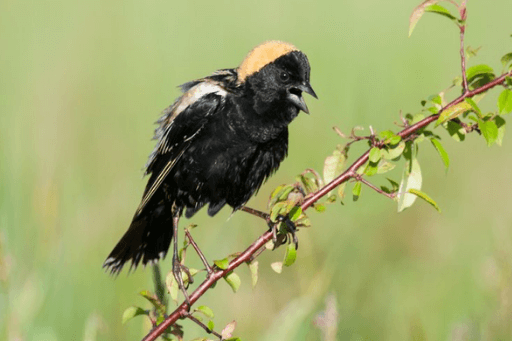About the Savannah Sparrow
The Savannah Sparrow is one of North America's most numerous songbirds, yet it is not as well-known as other common birds such as the American Robin and Red-winged Blackbird and its cousins the Song Sparrow and White-throated Sparrow. That's because the Savannah Sparrow is not a frequent backyard visitor, but rather a bird of grasslands and other expansive wide-open spaces. Like many other grassland birds, this species is in decline.
The Savannah Sparrow does not have bright colors; its plumage, streaked with browns and grays, serves it well as camouflage. It resembles the Song Sparrow but is generally paler, with a shorter tail, finer streaks, pointier bill — and a telltale dab of yellow between eye and bill. Formerly called the Ground Sparrow, this unassuming little bird holds exciting mysteries that scientists are still trying to solve.
A Natural Selection
With an expansive range across various landscapes, the Savannah Sparrow has many distinctive populations, some more isolated than others. As taxonomists puzzle over delineating this species' populations, it's hard not to draw a parallel to Charles Darwin's famous reflections on the different bill sizes, shapes, and habits of the Galapagos finches.
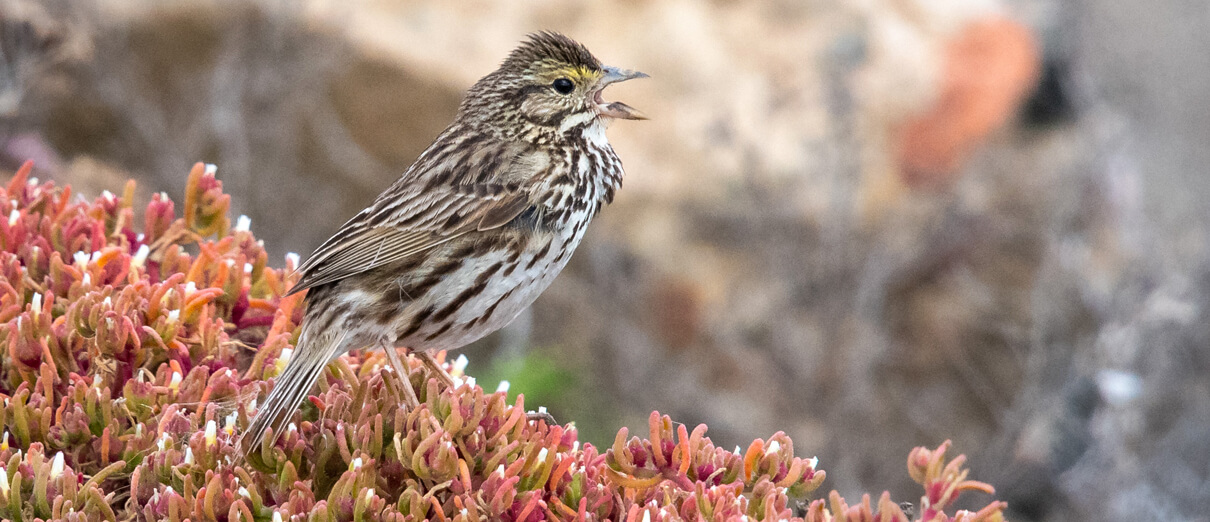
Variation between Savannah Sparrow populations can include differences in markings, bill shape, genetics, and even song. Over the years, 28 subspecies have been described and partitioned into five groups. Studies of Savannah Sparrow genetics indicate that populations in far-southern California and northwestern Mexico are particularly distinctive, including the “Large-billed” Savannah Sparrow, a pale, big-billed bird that may constitute a separate species.
Other “stand-out” subspecies include the frosty “Ipswich” Savannah Sparrow that nests on Sable Island, Nova Scotia, and winters on East Coast dunes, and the dark “Belding's” Savannah Sparrow, a Southern California marsh-nester.
Across the mainland, there are some regional tendencies in size, shape, and color. For example, Great Plains and western populations are generally lighter and smaller than those in the East. Down the West Coast, from Central California to Baja California's tip, Savannah Sparrows trend larger, paler, and less streaky the further south they occur.
Songs and Sounds
The Savannah Sparrow's song generally starts with two or three sweet, well-spaced notes followed by a several-part buzz. In construction, the song resembles that of the Song Sparrow, but it is noticeably less melodic. Compare for yourself at the links below:
Breeding and Feeding
Gnome-like Nester
The Savannah Sparrow thrives in open habitats that provide plenty of cover for its hidden nests. In 1895, ornithologist Frank M. Chapman wrote an apt description of this little bird's habits that helps explain why fewer people know the Savannah Sparrow well: “The roadsides abound with the birds bobbing up and down on the fence posts and chipping vigorously at every passerby. Their boldness is tempered with a certain timidity that becomes apparent when they are followed, for, dropping into the grass, they will slip away with surprising rapidity.”
Not unlike fabled gnomes, Savannah Sparrows do their best to maintain a low profile, for their own safety and that of their young. Instead of hopping around in the open, they frequently run along trodden pathways beneath the arc of bent grasses and forbs.
As with many migratory bird species, males arrive back on nesting grounds before females, but Savannahs of both sexes usually return sometime in April. Males sing on territory. Pairs form each breeding season, sometimes with birds re-bonding after nesting together the prior year. The female builds the nest, a tightly woven cup of thin grasses set beneath a screen of camouflaging coarse vegetation, such as overhanging or matted grasses or other plants. She then lays two to six eggs, which she incubates for ten to 13 days. Both parents feed the young for eight to 11 days, until they fledge. In cases where males disappear, females have successfully raised chicks by themselves.
A pair may produce one or two broods per season, depending upon latitude, predation, and other factors.
Undercover Forager
The Savannah Sparrow is a versatile forager. Although this species spends much of its time on the ground, depending upon the region, other food sources may draw it to the trees or the water's edge. Much of the diet in cold weather consists of tiny seeds and small fruits. During spring and summer, this bird also captures and eats a wide range of invertebrates, including beetles, caterpillars, flies, grasshoppers, and spiders. As with most other songbirds, including the Baird's Sparrow and Bobolink, the fast-growing young are exclusively fed protein-rich insects and spiders.
Region and Range
North American Fixture
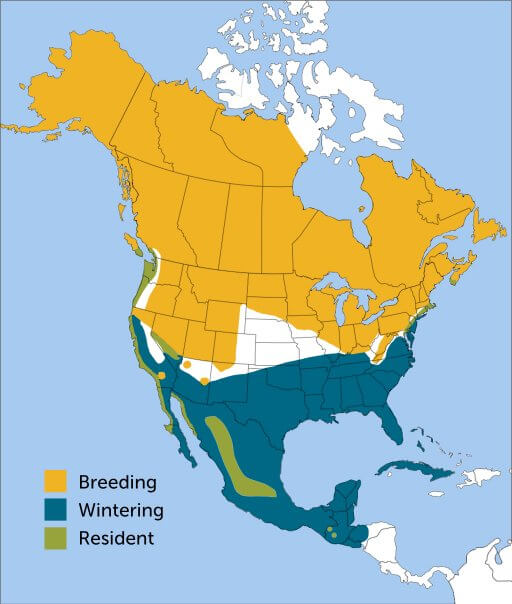
One of North America's most widespread songbirds, the Savannah Sparrow nests through most of Alaska and mainland Canada, south across a large swath of the northern United States. There are resident populations along the West Coast and in Mexico's Sierra Madre Occidental mountains, and also a small year-round population in the highlands of western Guatemala. Savannah Sparrows winter across the southern and eastern U.S., through Mexico, uncommonly in the northern Bahamas and Cuba, and sparingly into northern Central America.
Conservation
Local and Range-wide Focus

Help support ABC's conservation mission!
Between 1970 and 2014, the Savannah Sparrow's population is estimated to have declined by 40 percent. Habitat loss has led to declines in this species and other at-risk grassland birds such as the Sprague's Pipit and Eastern Meadowlark. Other threats to this species include pesticide use (which can both knock down insect prey populations and in some cases directly injure or kill the birds) and climate change. The untimely mowing of hayfields can destroy nests and young.
ABC's Migratory Birds Program and Northern Great Plains office work to stem these and other bird species declines through partnerships and the BirdScapes approach, which aims to conserve geographically linked habitats on breeding grounds, wintering grounds, and migration stopover sites. ABC is also lobbying for a Farm Bill that does the most possible to benefit both birds and agriculture.
Get Involved
Policies enacted by the U.S. Congress and federal agencies, such as the U.S. Fish and Wildlife Service, have a huge impact on U.S. birds. You can help shape these rules for the better by urging lawmakers to prioritize birds, bird habitat, and bird-friendly measures. To get started, visit ABC's Action Center.
Living a bird-friendly life can have an immediate impact on the birds around you. Doing so can be as easy as adding native plants to your garden, avoiding pesticides, and keeping cats indoors. To learn more, visit our Bird-Friendly Life page.
American Bird Conservancy and our Migratory Bird Joint Venture partners have improved conservation management on more than 8.5 million acres of U.S. bird habitat — an area larger than the state of Maryland — over the last ten years. This is a monumental undertaking, requiring the support of many, and you can help by making a gift today.





































